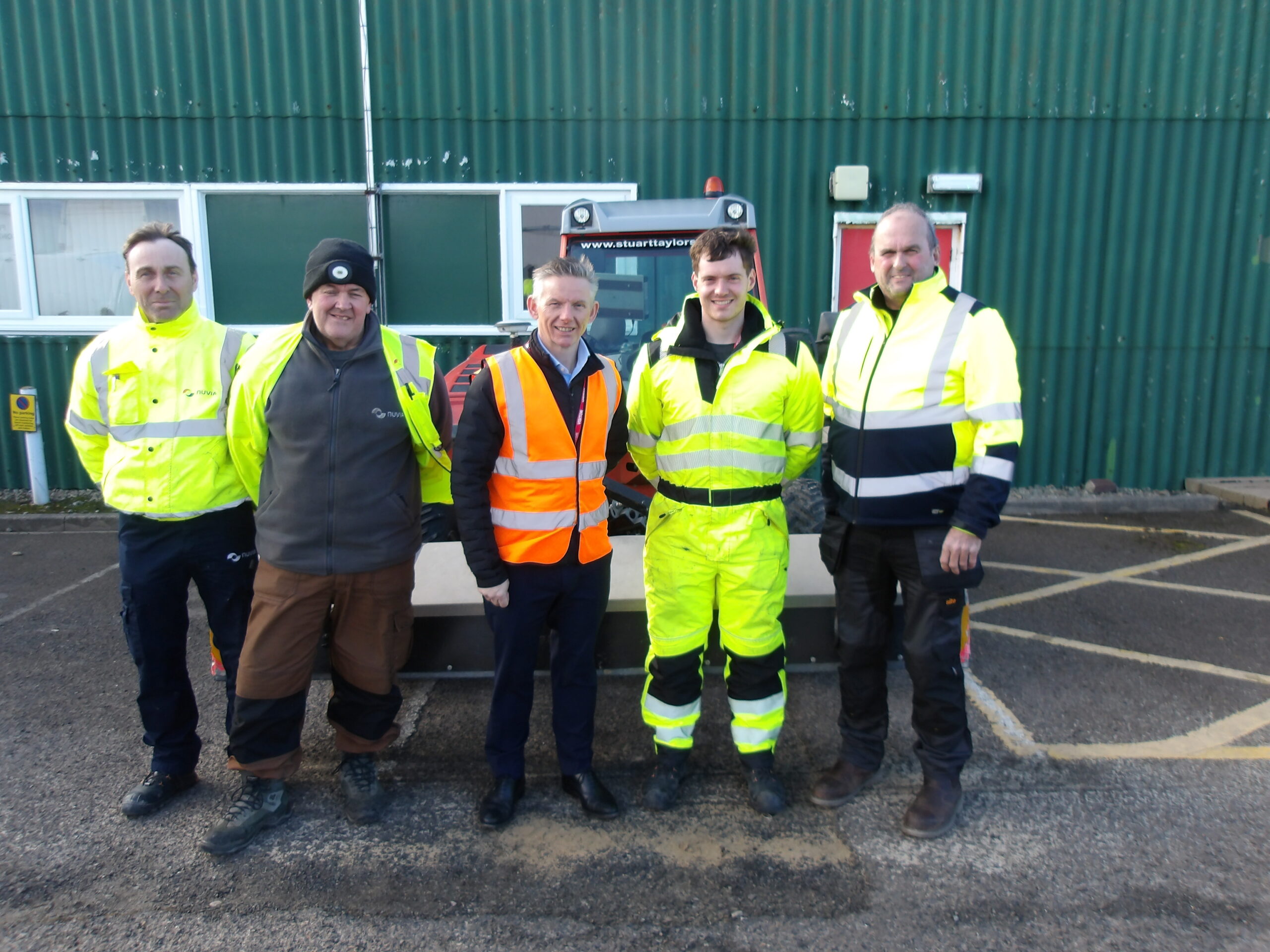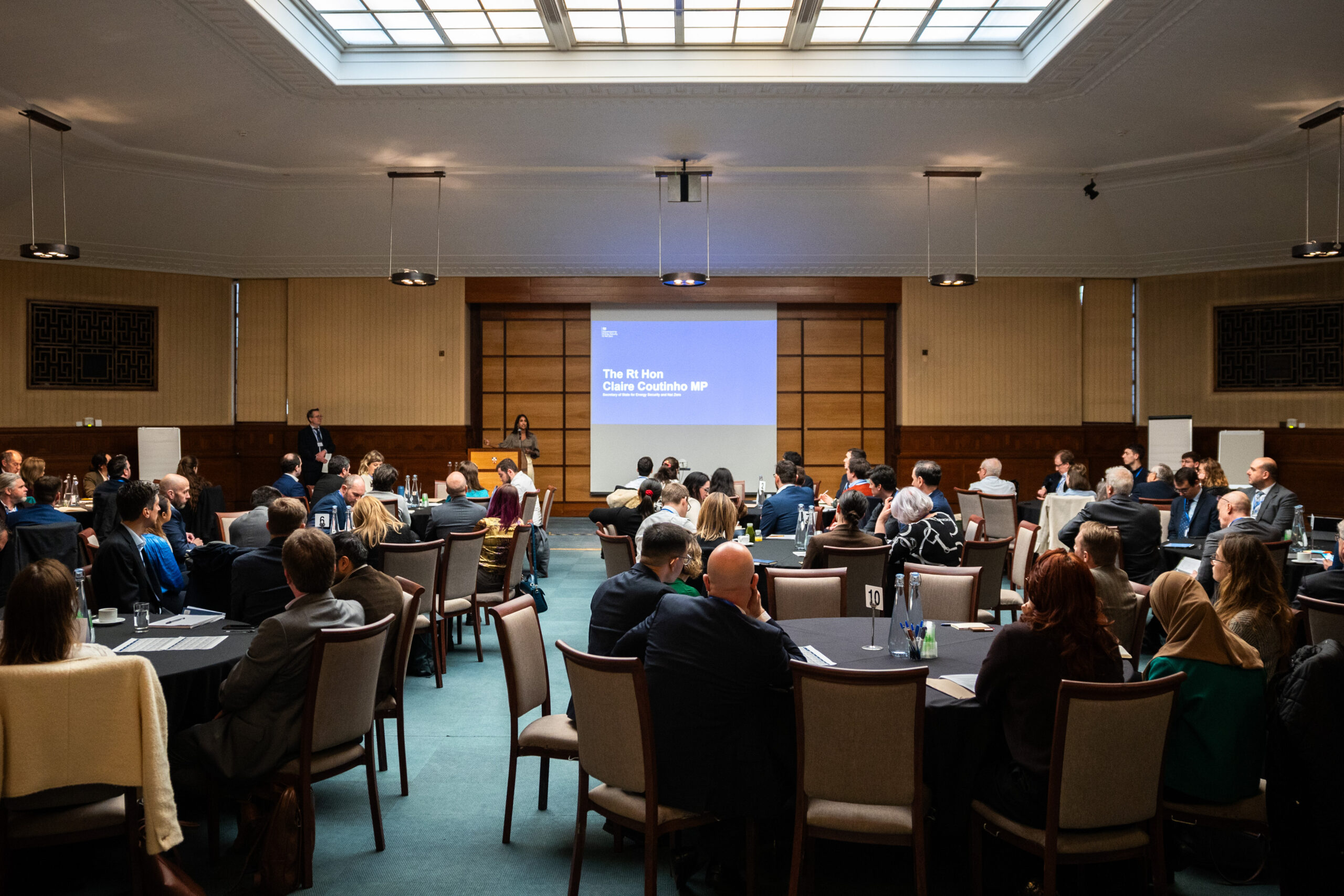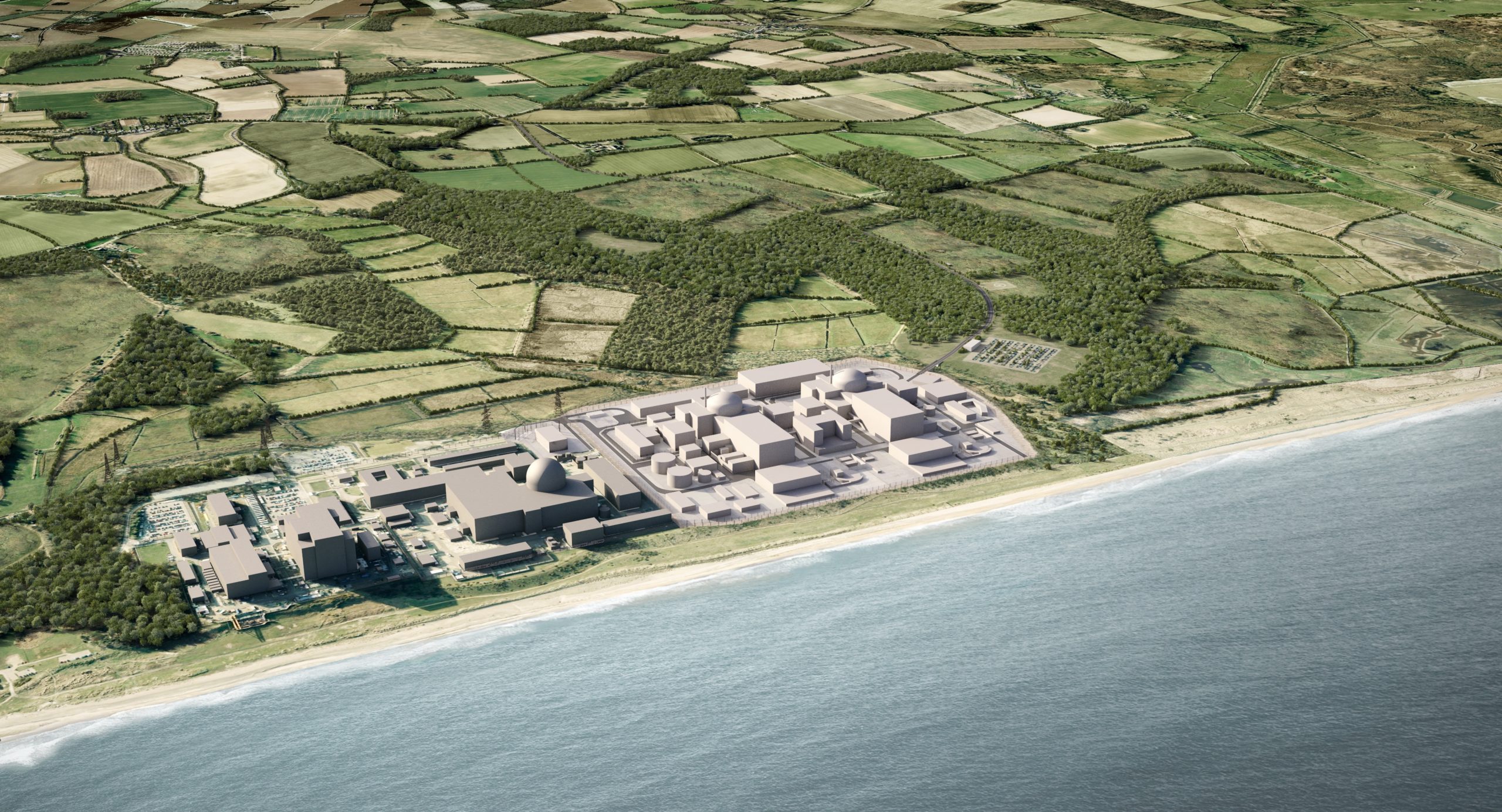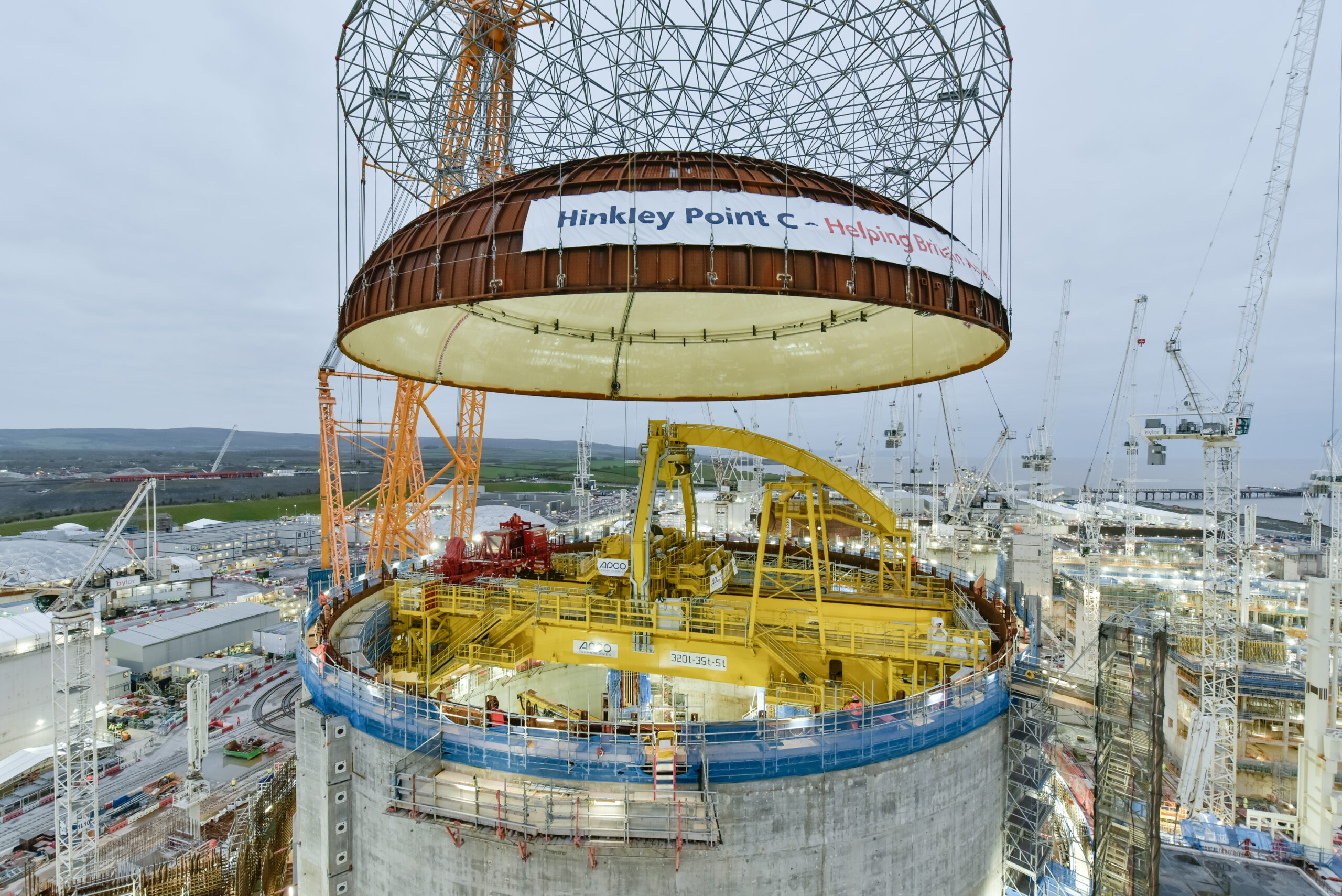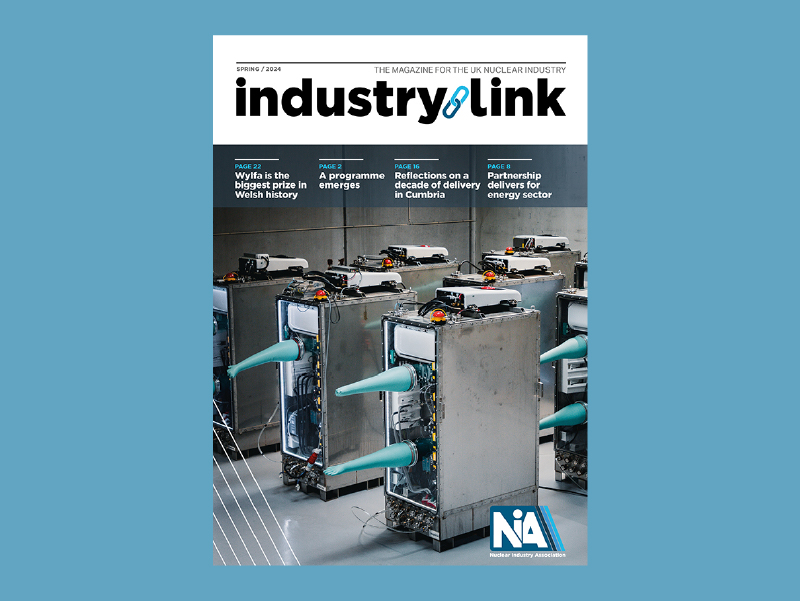The Nuclear Industry Association (NIA) welcomes the chance to respond this call for evidence on the baseline report of the Second National Infrastructure Assessment from the National Infrastructure Commission.
The NIA is the trade association and representative body for the civil nuclear industry in the UK. We represent approximately 250 companies operating across all aspects of the nuclear fuel cycle. This includes the current and prospective operators of nuclear power stations, the international designers, and vendors of nuclear power stations, and those engaged in decommissioning, waste management and nuclear liabilities management.
Some of our members may choose to make their own detailed submissions so therefore this response should be considered a high-level overview.
Introduction
Question 1: Do the nine challenges identified by the Commission cover the most pressing issues that economic infrastructure will face over the next 30 years? If not, what other challenges should the Commission consider?
We are happy with the overall challenges identified and believe that nuclear power relates to the three key challenges of this baseline report, more specifically:
- Reaching Net Zero
- Nuclear can help decarbonise electricity generation by 2035 and beyond, using large-scale reactors and advanced nuclear technologies such as SMRs, AMRs and fusion
- A recent UNECE report found that nuclear has lifecycle greenhouse gas emissions between 5.1g and 6.4g per kWh – lower than wind, solar and hydropower
- Nuclear can provide low-carbon hydrogen and/or electricity for a full range of possibilities – from decarbonising transport to providing clean heat to buildings and industry
- Heat produced by nuclear power has untapped potential that should be explored by the Commission and Government
- Climate resilience
- Reducing carbon emissions by using low-carbon power like nuclear will mitigate climate adverse events and decrease risk to critical infrastructure
- Supporting levelling up
- The nuclear industry has a long history of levelling up communities by providing long-term, highly paid, highly skilled jobs
- In the context of the Commission’s focus on transport for this challenge, the construction of nuclear power plants means greater transport links are provided to areas which are traditionally not well connected before the arrival of nuclear
We urge the Commission to continue to use a whole system approach to the climate crisis, in line with Government policy and planning.
While we welcome the Commission’s shift in thinking around nuclear power in this most recent baseline report, we still question the NIC’s conclusion of the role of nuclear power in a Net Zero world. In its last assessment, the Commission said that the “Government should not agree support for more than one nuclear power station beyond Hinkley Point C before 2025.” This statement was reiterated in a letter to the Chancellor last year.
We hope that the Commission in its impending Second National Infrastructure Assessment embraces the Government’s current ambition for nuclear power in the UK and integrate its full range of abilities into its forecasting and conclusions.
Nuclear is the only proven source of reliable low carbon generation and its role in the energy mix has been supported by multiple reputable institutions, including the OECD, IEA (2019), EIB (2019), IPCC (2018), MIT (2018) and the Energy Systems Catapult (2020), Barclays (2021) and UNECE (2021).
In our Forty by 50 report – published in 2020 – we stated our belief that the nuclear sector could contribute 40GW of power by 2050, which includes 240TWh of electricity, 75TWh of hydrogen and 100TWh of district heat. Meeting this target would, on average, avoid 186.75m tonnes of CO2 a year (equivalent to the annual emissions of 48 coalfired power plants), create an additional 300,000 jobs, and contribute £33bn annual GVA – greater than the entire electricity and gas industry today.
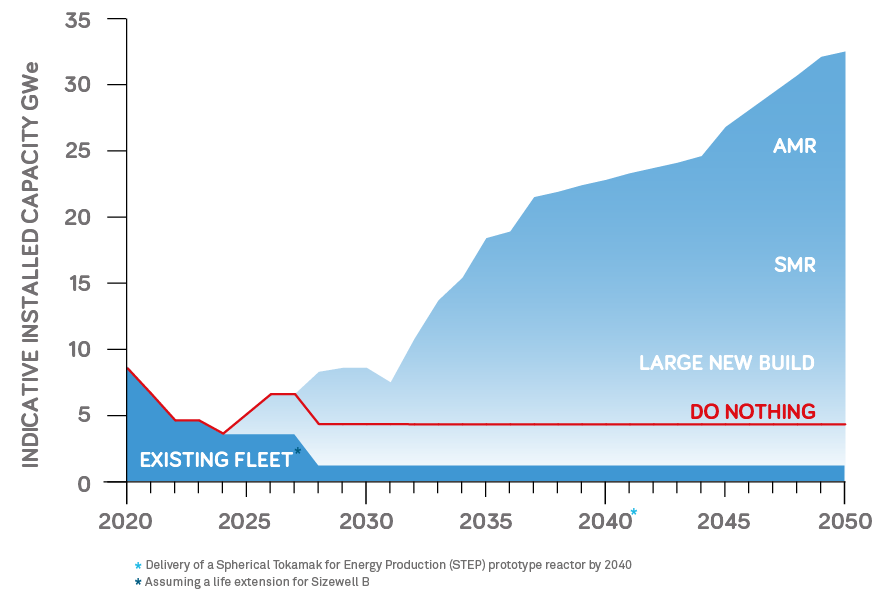
The Government has also made its intentions on nuclear power clear. In its Energy White Paper and the Prime Minister’s own Ten Point Plan, it said it would be pursuing all nuclear technologies, including large-scale reactors, and have since announced £1.8bn to help deliver the 3.2GW station at Sizewell C. Hinkley Point C and Sizewell C will together meet around 14% of the UK’s current electricity demand.
The Government’s own modelling for the Energy White Paper and Net Zero Strategy state that around 30GW of installed nuclear capacity will be required to decarbonise the UK’s electricity by 2050.
It is also working with the sector in the development of the Rolls Royce SMR. The first of their SMRs is set to be connected to the grid by 2031, with two reactors coming online each year thereafter. Rolls Royce plan on a fleet of 16 reactors across the UK, equating to 7.5GW of installed electrical capacity.
SMRs are flexible in their output. They can provide baseload electricity when the wind doesn’t blow and the sun doesn’t shine, or, in periods of high renewable generation, can load follow by diverting to hydrogen or synthetic aviation fuel production.
The development of AMRs is also progressing, with the Government having recently confirmed its preference to pursue High Temperature Gas Reactors as the technology of choice for its AMR programme. It committed £385m to this fund in its 2020 Energy White Paper, which may include the development of a demonstrator AMR for hydrogen production. Demonstrators are targeted to be deployed in the early 2030s.
Beyond AMRs, the UK is a key player in the burgeoning global nuclear fusion market as the home of the Joint European Torus (JET) at the Culham Centre for Fusion Energy. In the last year, the Government’s Spherical Tokamak Energy Programme (STEP) has shortlisted five sites for a UK commercial fusion reactor, making the technology more of a reality.
Today, the UK civil nuclear industry has robust capability which has been developed and proven over decades, alongside a rich pipeline of research and development. This includes the following:
- Our current fleet, operated by EDF, is amongst the highest performing across the globe, generating 40% of UK’s domestically generated clean electricity, making a major contribution to national resilience and energy independence. The carbon savings from this are equivalent to taking a third of all cars off UK roads
- Urenco’s facility in Capenhurst is a world-leading uranium enrichment plant, and Westinghouse’s first-class Springfields site in Preston manufactures fuel for reactors operating in the UK, and across Europe
- Spent fuel is managed with unparalleled expertise at Sellafield, pending construction of a long-term geological disposal facility. Companies within the Nuclear Decommissioning Authority (NDA) estate, such as Sellafield Ltd and Magnox, have together developed a world-class approach to safe, efficient and innovative decommissioning of our oldest power stations and other complex legacy facilities
- The National Nuclear Laboratory and the Nuclear Advanced Manufacturing Research Centre are two key organisations responsible for driving innovation to support nuclear’s contribution to the future, net zero energy mix. The UK Atomic Energy Authority in Oxfordshire, and others, are pioneering the technologies which will make nuclear fusion a reality
- The industry currently provides around 65,000 direct jobs, extending to up to approximately 160,000 when further job creation in the wider supply chain is included
- Annually, the sector contributes £6.2bn in GVA to the national economy, with £4bn being in the Northern Powerhouse area.
Again, we believe the National Infrastructure Commission should use the opportunity of its next assessment to further update its thinking around nuclear power.
Question 2: What changes to funding policy help address the Commission’s nine challenges and what evidence is there to support this? Your response can cover any number of the Commission’s challenges.
We hope the UK’s upcoming Taxonomy will help provide a level playing field for investment for low carbon technologies.
Nuclear energy has the lowest lifecycle carbon intensity of any electricity source, as referred to in an earlier answer in our response. It has the lowest land footprint of any clean energy source, minimising collateral environmental impacts. A study by the USA’s Nuclear Energy Institute found that wind farms require up to 360 times as much land to produce the same amount of electricity as nuclear energy and solar farms require up to 75 times the land.
The UK, moreover, has an exemplary record in waste management and is following international best practice in pursuing geological disposal for the long-term disposal of higher activity radioactive waste.
The NIA welcomed the Government’s intention to consult on the criteria for nuclear power to be included in the UK Taxonomy and the formation of the Energy Working Group to look at the role of nuclear power. We believe it is clear that nuclear technologies would make a substantial contribution to the Taxonomy’s objective of climate change mitigation, and these actions are a move in the right direction.
We should note that significant research on nuclear’s characteristics has already been undertaken by the EU in the drafting of its own Taxonomy. The EU commissioned an exhaustive Joint Research Centre (JRC) report that found there was no scientific basis to treat nuclear differently from other sustainable technologies.
It has since been announced that the EU will include nuclear in its Taxonomy on a series of conditions, such as plans for the disposal of nuclear waste and the use of accident-tolerant fuel. However, the UK must avoid the mistakes of the EU, who wasted years, money, and resource in a political effort to deny nuclear a sustainable classification despite the science.
As a world leader in climate change mitigation and environmental finance, the UK can make decisions that have international ramifications. Nuclear’s exclusion from the Taxonomy would make it more difficult to mobilise the investment in nuclear that the Government wants to see and make our path to Net Zero by 2050 more uncertain.
In June 2021, HMT Treasury published the Green Financing Framework which sets out how the UK Government will finance expenditures related to tackling climate change through the issuance of green gilts and Green Savings Bonds via NS&I. The Framework is intended to be aligned to the upcoming UK Taxonomy.
Nuclear power was specifically excluded from the Framework, with HMT stating that in consideration of the ‘many sustainable investors [that] have exclusionary criteria in place around nuclear energy, the UK Government will not finance any nuclear energy-related expenditures under the Framework’.
In consequent answers to numerous Parliamentary Questions, Economic Secretary John Glen said that the Framework followed current international market standards for sovereign green bonds and does not wholly represent what the Government considers to be ‘green’. Government has reiterated its stance that nuclear power has an important part to play in Net Zero by 2050 and financing for the technology will be considered as part of its development of the UK Taxonomy.
The Framework will be reviewed on a regular basis, so there may be a time when nuclear is included in the future. While the Framework will not prevent private investors from investing in nuclear, its exclusion has sent a signal to the finance community that the Government does not see nuclear power as ‘green’ enough.
This must be rectified through nuclear’s inclusion in the UK Taxonomy if Government want to show they are confident in nuclear power. The positive recognition of nuclear in the Taxonomy would help attract investors into nuclear. As we will lay out, this external investment is vital for new nuclear projects in the UK.
More specifically for the nuclear industry, the successful progression of the Nuclear Energy (Financing) Bill through Parliament is essential to establish the Regulated Asset Base (RAB) model, which could enable the low-cost financing of projects such as Sizewell C, and beyond.
RAB financing would save consumers around £30bn on bills over the lifetime of each project, around £10 per year off the typical bill, according to official BEIS estimates. This is compared to the CfD mechanism used for Hinkley Point C.
A large-scale nuclear project financed using RAB would add a small levy to bills of no more than a few pounds during the early phase of construction and less than £1 per month over the course of a project. The income generated would allow project developers to finance the project at cheaper rates, which would substantially cut the ultimate cost to consumers.
From the NIA’s own analysis, a large-scale nuclear project such as Sizewell C would also save CO2 emissions worth £526m per year at today’s carbon prices, or £18 per year for every UK household. As the UK heads towards Net Zero the carbon price is only projected to rise steadily.
However, the funding needs of SMRs are different to large-scale reactors and a long-term Government agreement through a Contract for Difference (CfD) model is preferred. It is important to note that the industry believes minimal changes will need to be made to the current CfD contracts and are confident that private equity can be raised.
Question 5: What are the main opportunities in terms of governance, policy, regulation and market mechanisms that may help solve any of the Commission’s nine challenges for the Next Assessment? What are the main barriers? Your response can cover any number of the Commission’s challenges.
In the 2018 Nuclear Sector Deal, the UK nuclear sector committed to reducing the cost of new build projects by 30% by 2030 and to establish delivery excellence. This target can be achieved through a combination of using the RAB model (as previously mentioned) to achieve a significantly lower cost of capital and through applying the benefits of learning and replication to achieve cost efficiencies in construction practice and supply chain delivery.
We believe a well-disciplined, programmatic approach using repeated designs and an experienced supply chain should be the focus, capitalising on the Nuclear Sector Deal’s activity, taking real-time supply chain learnings from Hinkley Point C.
It is imperative that progress is made for Sizewell C to meet Final Investment Decision (FID) by the end of 2022 and to capitalise on the current nuclear supply chain. A gap in construction will lead to a loss of essential skills and expertise and would be damaging to the UK economy through the loss of nuclear contracts to international competitors.
Reaching FID for Sizewell C would also reduce the agreed CfD for Hinkley Point C to £89.50/MWh. As Sizewell C will be a replication of Hinkley Point C, there will be a significant reduction in the cost of construction, as seen in most types of infrastructure projects that fleet build.
For next generation reactors, cost will be reduced due to their modularity. Their designs have simpler, shorter construction programmes, and combined with opportunities for co-location with other facilities, this will bring down both cost and risk.
We understand that a new National Policy Statement (NPS) for nuclear electricity generation infrastructure deployable after 2025 will be developed to reflect the changing technology landscape for nuclear and that the Government envisages consulting on a siting approach for new nuclear developments.
This new National Policy Statement (NPS) for nuclear power should be published to include Gen III+ reactors and beyond. The NPS should tackle a new siting process for SMRs – either through authorising more nuclear licensed sites or approval of unused brownfield sites to hold SMRs without special categorisation.
Furthermore, HMG should look to release existing nuclear sites as a matter of urgency, such as NDA sites, for the development of SMRs. This can be done in two ways: through negotiations with a current nuclear site owner or with the Nuclear Decommissioning Authority (NDA) to obtain a site that is appropriate for deployment.
Last year, BEIS announced that the Generic Design Assessment (GDA) would be opened to advanced nuclear technologies. Slots must be opened with immediate effect in order to move forward with the deployment of these technologies.
It is imperative that these steps must be taken by Government at pace in parallel, not succession, in order to meet industry targets. Progress must be made on these barriers within the year to meet nuclear sector targets and to avoid falling behind our international competitors, who, in ways, are already ahead of us.
Reaching net zero
Challenge 2: Decarbonising electricity generation – the Commission will consider how a decarbonised, secure and flexible electricity system can be achieved by 2035 at low cost.
Question 8: What are the greatest risks to security of supply in a decarbonised power system that meets government ambition for 2035 and what solutions exist to mitigate these risks?
As mentioned previously in this submission, new analysis since the Commission’s first assessment represents an opportunity for NIC to further explore the benefits of a renewed commitment to new nuclear and the substantial role it can play in delivering net zero
In its second baseline report, the Commission finds that “transitioning to a low carbon energy system based on long lasting capital assets, such as wind farms and nuclear power stations, with less dependence on fuel should reduce exposure to price spikes like those currently being experienced.”
Funding mechanisms such as the RAB model for large-scale nuclear, and CfD for renewables and SMRs, provide Government with the ability to ‘lock-in’ a stable price, ensuring consumers have reduced exposure to fossil fuel price volatility in future. We therefore question why the Commission believes that only one more large-scale nuclear plant should be approved by Government before 2025.
Climate change mitigation is not about finding short-term solutions. We need to plan for the long-term too, and that includes nuclear power.
The Climate Change Committee (CCC) has estimated that the UK’s electricity use may be up to four times what it is today in 2050, leaving a significant gap that needs to be filled by clean and low-carbon power if we are to meet these needs while simultaneously building an energy system that we get us to Net Zero. The CCC has also stated that 38% of electricity in 2050 should come from ‘firm’ sources, of which nuclear is the only proven low-carbon option at scale.
While we believe that CCS will have a role in play in a Net Zero future, we have to stress that it has yet to operate commercially at the scale in the UK, will likely have a higher cost to consumers than new nuclear under the proposed RAB model, and is still reliant on fossil fuels. Even with a capture rate of 95%, CCS will still contribute significantly more carbon emissions than at the rate we need to reduce emissions to meet Net Zero by 2050.
Nuclear is essential to the UK’s decarbonised electricity mix, currently supplying 20% of electricity demand and nearly a half of our low-carbon electricity. The current fleet has saved more than 1bn tonnes of carbon emissions over its lifetime. During the challenging circumstances caused by the events of the past few months, nuclear has proven its consistency in keeping the lights on even during adverse events and has showcased its ability to be flexible when necessary.
However, all but one of the current six nuclear power stations will cease operating by 2030. This is excluding Hunterston B which closed on 7 January 2022 after 46 years of operation, and Dungeness, which closed in 2021. In total, we will lose more than 5.2GW of power from the grid.
Planned closures of nuclear reactors were reflected in the most recent DUKES (Digest of UK Energy Statistics) from BEIS, which showed nuclear generation was down to 16.1%. While it will rebound slightly next year, in the medium-term, we are losing capacity as old stations retire, and losing it fast.
Nuclear generation will drop away swiftly and will stay low unless we invest urgently in new capacity. Of the UK’s eleven generating reactors, six more will retire by March 2024 at Hinkley Point B, Hartlepool and Heysham 1. These stations have been the most productive low-carbon assets in British history. They were built decades ago yet are still some of the UK’s leading sources of clean power. In short, these reactors provide clean, always-on power for which we simply have no replacement.
We don’t just need the power to decarbonise the grid: we need it for new fleets of electric vehicles, clean hydrogen production, synthetic fuels, and clean home heating solutions. Clean electricity is the essential foundation of our decarbonisation.
In the long-term, building a new fleet of nuclear reactors will help mitigate similar future events, making the UK less reliant on imported energy from foreign sources and keeping the lights on during periods when the wind doesn’t blow, and the sun doesn’t shine.
Our own analysis found that if the UK committed to building two large scale nuclear stations at Wylfa and Sizewell, along with a fleet of Small Modular Reactors, it could replace more than 10bn cubic metres of gas imports.
Challenge 4: Networks for hydrogen and carbon capture and storage – the Commission will assess the hydrogen and carbon capture and storage required across the economy, and the policy and funding frameworks needed to deliver it over the next 10-30 years.
Question 11: What barriers exist to the long-term growth of the hydrogen sector beyond 2030 and how can they be overcome? Are any parts of the value chain (production, storage, transportation) more challenging than others and if so, why?
Nuclear, as a proven zero carbon generator, should be a key part of the clean hydrogen mix and could produce 18GW of low carbon hydrogen by 2050. It can produce hydrogen in three ways:
- Current nuclear reactors and those under construction today could power cold-water electrolysis, producing emissions-free hydrogen at normal temperatures. Modular reactor technologies will also be able to power this process to produce green hydrogen
- Low carbon heat from new nuclear reactors could power steam electrolysis, which is more efficient in producing hydrogen
- AMRs under development operating between 600-900°C could thermochemically split water into hydrogen and oxygen without electricity, as envisaged in the Prime Minister’s Ten Point Plan
All of these processes would produce emissions-free hydrogen. Combined with the extremely low lifecycle carbon footprint of nuclear power, these options would form an invaluable part of a robust, clean hydrogen mix.
In the immediate future, Government support for nuclear projects to demonstrate the production of low carbon nuclear hydrogen through heat-assisted electrolysis at a nuclear site, would be welcome, as it would be a vital first step in illustrating and helping prove the opportunity for nuclear hydrogen over the longer-term. We also understand Sizewell C is exploring decarbonising its construction processes via use of hydrogen, along with the potential to for heat assisted hydrogen production once operational.
In the longer term, SMRs and AMRs could also deliver increased efficiencies in hydrogen production and further cost reductions. More efficient hydrogen production also reduces the scale of low carbon generation capacity required to deliver a given volume of low carbon hydrogen – an important factor given the very large scale of new generation capacity needed to achieve net zero. Government support for AMR research is therefore welcome and essential, and continued investment over the coming years will be a priority to make the technology commercially viable by the Government’s target of a demonstrator by the early 2030s.
As well as AMRs, which offer the potential for heat above 600°C for hydrogen production, fusion could also provide such high-grade heat. Government have invested £220m in the first phase of design of a fusion prototype power plant, STEP.
The following parameters for hydrogen deployment in the Hydrogen Strategy would help facilitate nuclear-hydrogen solutions and other clean hydrogen solutions:
- Classification of hydrogen created from nuclear power as low-carbon hydrogen because it is emissions-free and would have a very low lifecycle carbon footprint.
- Identification of low-carbon hydrogen, produced directly from zero-carbon generators, as the preferred option where possible
- Transition from grey hydrogen as soon as practical
- To ensure collaboration between the nuclear industry and Government, the latter should include direct nuclear industry representation on the Hydrogen Advisory Council, in line with previous commitments, to ensure that low-carbon hydrogen from nuclear is incorporated into the overall vision of a hydrogen economy
- Direct nuclear industry participation in the Hydrogen Advisory Council Working Groups to provide expertise on how to implement the recommendations of this report and develop green hydrogen production and distribution capability
- A target consistent with the Nuclear Industry Council-approved Forty by ’50: The Nuclear Roadmap for nuclear to produce 75 TWh of hydrogen would drive ambition and innovation in the industry
- Grants for the study and development of solutions to improve hydrogen storage, including the potential to use depleted uranium metal to store hydrogen at high density
The following investment incentives for nuclear-hydrogen and other low-carbon hydrogen should be adopted to drive innovation and reduce costs:
- A grant and subsidy scheme to encourage research and development to help reduce the costs of electrolysers. This could be part of a broader scheme for covering electrolysis from all zero-carbon generators, which should include R&D and demonstration programmes for all types of nuclear technologies
- A new funding model to reduce the cost of capital associated with nuclear projects, thereby lowering the price of electricity they produce. Both a Regulated Asset Base (RAB) model and direct government financing during construction could achieve these reductions
- Capital grants to zero-carbon generators to install electrolysers and expand funding for research and development into the technology
- Consideration of a new scheme to gradually replace payments to zero-carbon generators for constraining generation with support for hydrogen production in collaboration with Ofgem
- An ambitious carbon pricing system which reflects the full externalities of emissions and the UK’s net zero target
- The removal of the anomaly whereby nuclear-produced hydrogen does not qualify for Renewable Transport Fuel Obligation (RTFO) support whereas biomass-produced hydrogen does
- An AMR development timeline, involving five-year R&D funding settlements to provide stability, in-line with having a demonstrator by the government’s target of the early 2030s
While the Government was successful in setting out its vision for a hydrogen economy in its 2021 Hydrogen Strategy, there are many aspects of delivery required for its implementation which need to be further addressed. We therefore propose that the above barriers and issues set out above should be tackled as a priority in order to enable nuclear power to fulfil its full potential in this area of the market.





